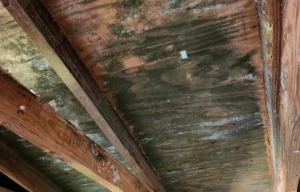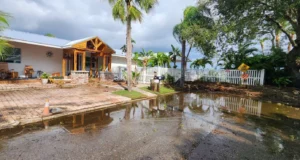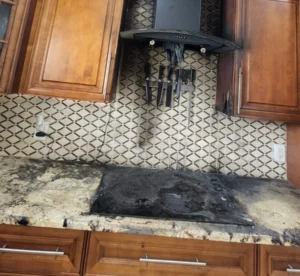What is Black Mold?
You may have heard scary stories about black mold invading homes and making people sick—but what exactly is black mold, and should you be worried about it?
What Is Black Mold?
Black mold is a common name for Stachybotrys chartarum, a type of fungus that thrives in damp, humid environments. It appears dark green or black in color and typically grows on materials high in cellulose, such as drywall, wood, and paper.
Not all black-colored molds are Stachybotrys chartarum, but this particular species has gained a reputation due to concerns about its potential health effects.
Why Does Black Mold Grow?
Black mold, like other molds, needs moisture to grow. Leaky roofs, plumbing issues, poor ventilation, or flooding can create the perfect environment for it to develop. Once spores settle in a damp area, they begin to multiply, feeding on the organic materials in the surfaces they colonize.
Is Black Mold Dangerous?
This is one of the most common and controversial questions. According to the CDC, exposure to black mold can cause symptoms in sensitive individuals—particularly those with allergies, asthma, or compromised immune systems. Symptoms may include:
- Chronic coughing or sneezing
- Eye irritation
- Skin rashes
- Headaches
- Fatigue
For most healthy people, brief exposure to small amounts of black mold isn’t likely to cause serious issues. However, prolonged or significant exposure can increase the risk of respiratory problems.
How Can You Spot Black Mold?
Black mold usually appears as dark spots or streaks, often with a musty smell. It can hide behind walls, under carpets, or inside HVAC systems. If you’ve had water damage, it’s worth investigating—even if you don’t see it right away.
What Should You Do If You Find It?
If you suspect or discover black mold in your home:
- Don’t disturb it. Scrubbing mold without proper protection can release spores into the air.
- Fix the moisture source. Mold won’t go away unless the damp environment is addressed.
- Call a professional (Like Us Extreme Restoration USA). For large or hidden infestations, professional mold remediation is often the safest route.
- Use protection. If handling a small area yourself, wear gloves, a mask, and eye protection.
Final Thoughts
Black mold isn’t something to panic over, but it should be taken seriously. The key is early detection and addressing moisture problems before mold takes hold. If in doubt, consult a professional to assess and safely remove any mold you find.




